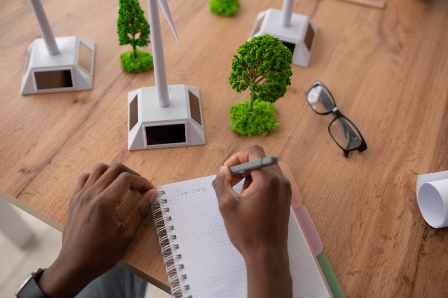In the ever-evolving landscape of technology, smart homes have become a testament to the seamless integration of comfort and efficiency. As we delve into the realm of smart home innovations, it becomes crucial to explore tips that go beyond the basics. This article aims to provide insights into maximizing comfort and efficiency in your smart home, offering unique and practical tips that you might not have tried yet.
Smart Lighting Solutions
Smart lighting is more than just a convenience; it’s a gateway to energy efficiency and ambiance. Investing in different types of smart bulbs, from color-changing to dimmable ones, allows for personalized lighting experiences. Automation and scheduling further optimize energy consumption, ensuring lights are only on when needed.
Smart Thermostats for Climate Control
Maintaining the ideal temperature in your home is key to comfort and energy savings. Smart thermostats take this to the next level, allowing you to program and optimize heating and cooling based on your preferences and schedule. The result is not only a cozy home but also reduced energy bills.
Security and Surveillance Systems
Enhancing security is a prime concern for homeowners. Smart security systems offer a comprehensive solution by integrating cameras, sensors, and alarms. Exploring advanced features such as facial recognition and mobile alerts adds an extra layer of protection.
Smart Appliances in the Kitchen
The heart of many homes, the kitchen, can benefit greatly from smart appliances. From ovens that can be controlled remotely to refrigerators that help with grocery management, these innovations streamline tasks and contribute to overall efficiency in the kitchen.
Voice Control and Virtual Assistants
Embracing voice control through virtual assistants like Amazon Alexa or Google Assistant adds a touch of futuristic convenience. Controlling various smart devices with simple voice commands enhances accessibility and makes daily tasks more effortless.
Smart Furniture and Home Decor
Imagine furniture that adapts to your needs or home decor that responds to environmental changes. Smart furniture and decor items contribute not only to functionality but also to the aesthetic appeal of your smart home.
Automated Window Treatments
Optimizing natural light can significantly impact both mood and energy consumption. Motorized blinds and curtains can be programmed to adjust based on the time of day, helping to create the perfect lighting conditions for each room.
Smart Home Entertainment Systems
Entertainment plays a vital role in our lives, and smart home technology has transformed the way we experience it. From voice-controlled TVs to immersive sound systems, creating a home theater experience has never been easier.
Energy-Efficient Smart Home Construction
For those building a new home, incorporating smart technologies during the construction phase is a forward-thinking approach. From sustainable materials to energy-efficient design, the choices made during construction can have a lasting impact on comfort and efficiency.
Remote Monitoring and Control
Being able to monitor and control your smart home remotely adds a layer of convenience and security. Whether it’s adjusting the thermostat while on vacation or checking security cameras from afar, remote access ensures peace of mind.
Upgrading Older Homes to Smart Homes
Transforming an older home into a smart one comes with its challenges, but the benefits are worth it. Retrofitting smart technologies allows homeowners to enjoy the comforts of modern living without the need for a complete overhaul.
Creating Personalized Smart Home Routines
Automation is at the core of smart homes, and tailoring routines to individual preferences takes it a step further. From waking up to a pre-set lighting scheme to having the coffee maker start brewing, personalized routines make daily life more enjoyable.
Future Trends in Smart Home Technology
As technology advances, so does the potential for smart homes. Exploring upcoming trends, from AI integration to augmented reality, can give homeowners a glimpse into the future and help them stay ahead of the curve.
FAQs (Frequently Asked Questions)
While some may require professional installation, many smart home devices are designed for easy installation and can be set up by homeowners.
Smart homes are designed to optimize energy use, and when used correctly, they can contribute to energy savings rather than consumption.
Yes, many smart home devices are designed to be compatible with each other, allowing for seamless integration across different brands.
Like any connected technology, there is a potential risk. However, implementing security measures, such as strong passwords and regular updates, can mitigate these risks.
Start small by incorporating standalone smart devices, like smart plugs or bulbs. Gradually add more devices and consider a central hub for better integration.
Conclusion
In the dynamic world of smart home technology, the quest for maximizing comfort and efficiency continues to drive innovation. By embracing the tips discussed in this article, you can create a smart home that not only meets your needs but also adapts to your lifestyle seamlessly. As we look to the future, staying informed about emerging trends will ensure your smart home remains a haven of comfort and efficiency.







Find Us on Socials